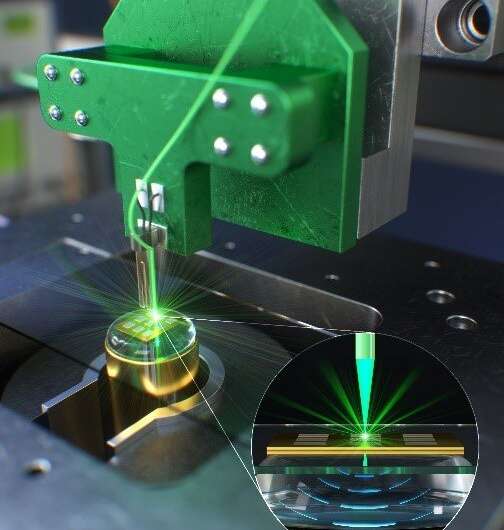Team applies fiber optics instead of lenses to open a new horizon of super-resolution photoacoustic microscopes

Newly developed photoacoustic microscopy uses vibrations generated when light is absorbed and captures images of cells or blood vessels. This development has increased the possibility of peering inside the body without contrast agents.
However, obtaining super-resolution images has been limited due to the difficulty of focusing light into a small, single point with a lens. Recently, a POSTECH research team has opened a new horizon in the development of a super-resolution photoacoustic microscopy system by using fibers instead of lenses.
A POSTECH research team led by Professor Chulhong Kim, Dr. Byullee Park, and Ph.D. candidate Moongyu Han has successfully acquired images of photoacoustic signals using a near-field optical fiber for the first time.
When using a photoacoustic microscopy, light is usually collected into the lens at a certain distance between the light source and the sample; however, due to diffraction limitations, collecting light at a single point has been challenging.
To overcome this issue, the research team developed a microscopy system that maintains the distance between the light source and the sample in the near-field range (tens of nm) where the diffraction phenomenon does not occur by using a tapered fiber with a diameter of tens of nanometers.
Published in Laser & Photonics Reviews, this is the first study to apply a noncoated fiber to the photoacoustic microscopy. As the metallic component had an impact on the photoacoustic signals, conventional metallic-coated tapered fibers could not be used for photoacoustic microscopy.
As a result of the study, an evanescent wave was generated at the end of the optical fiber, and the images of the sample were acquired with a resolution of 1.0 ± 0.3 micrometers. This resolution is sufficient for cellular imaging, including red blood cells.
Source: Read Full Article


